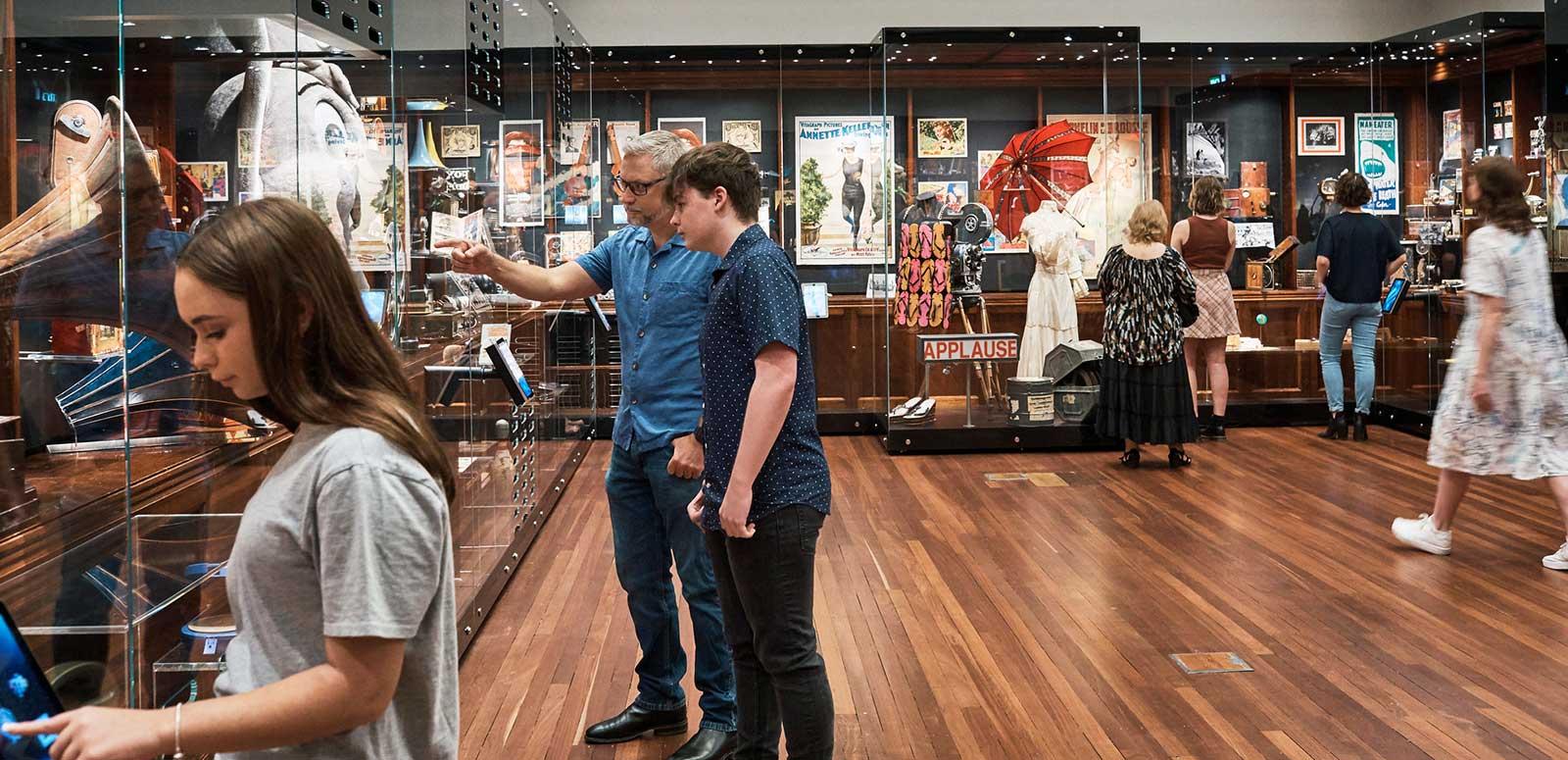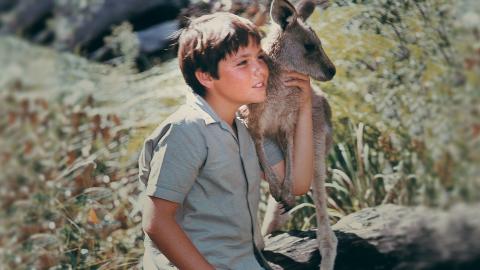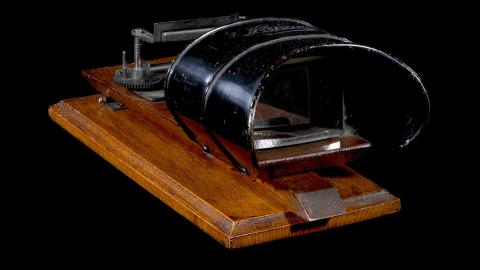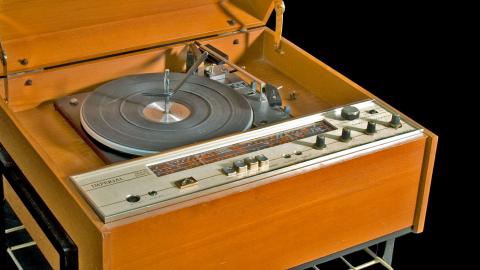

The Library
The Library at the NFSA
Discover The Library: a celebration of pop culture curiosities.
Lose yourself in The Library, a treasure box of the NFSA’s most precious, wondrous, and whimsical artefacts.
This art deco haven has been meticulously restored to its original splendour, from soaring skylight to historic cabinetry. A marvel in itself, The Library is now home to over 280 items drawn from the full expanse of our collection. History, culture and curios collide in the most unexpected ways: soft toys and gadgets nestled between priceless early artefacts. It’s less exhibition than a time capsule, collecting the eclectic souvenirs of our shared cultural experiences.
Trace technology’s evolution via iconic items such as the flipbook, View-Master, gramophone, boombox, and iPod Shuffle. Embark on a nostalgic journey through children's TV classics like Bobo the Clown, Skippy, Romper Room, Fat Cat, and The Aunty Jack Show. Dive into the rich tapestry of music and sound culture, ranging from Dame Nellie Melba to Kylie, Kamahl, and Yothu Yindi. And immerse yourself in film culture with artefacts from the newsreel era, amateur filmmaking, and Australian classics.
Open daily. Admission is free: your adventure begins now.

Highlights from The Library
Oversized mascot costume head from The Adventures of Blinky Bill, c. 1993
Mixed media fabric with plastic eyes
Donated by Flying Bark Productions
National Film and Sound Archive
Blinky Bill the koala, created in 1933 by author and illustrator Dorothy Wall, is a titan among Australian animal legends.
For almost a century, Blinky - along with girlfriend Nutsy, Splodge the kangaroo and Mr Wombat - has featured in a wide range of books, films and television shows, becoming one of our most enduring cultural figures.
For recent generations, Blinky will be best known from the ABC TV series The New Adventures of Blinky Bill (1984–87), or the movies Blinky Bill: The Mischievous Koala (1992) and Blinky Bill the Movie (2015), which featured the voices of Ryan Kwanten, Deborah Mailman, Toni Collette and Richard Roxburgh.
This costume item was originally worn as part of the promotional activities for the children’s cartoon series The Adventures of Blinky Bill (1993–95, 2004) and was donated to the NFSA by the pioneering Australian animation studio Yoram Gross Film Studios (now Flying Bark Productions) which also created the Dot and the Kangaroo movies.
Cast iron diving mask, 1950
Made by William Heffernan
Donated by Kerry Heffernan as part of the Bill Heffernan Collection
National Film and Sound Archive
William ‘Bill’ Heffernan was the first man to film a humpback whale and her calf in the wild. The feat was only made possible with his homemade gear. He crafted a watertight camera case and this extraordinary cast iron face mask which – not surprisingly, being made of cast iron – is somewhat heavier than the lightweight modern gear worn today.
Bill was one of our earliest film pioneers dedicated to capturing the beauty of the underwater world, along with Ron and Valerie Taylor and Jackson Jefferson, designer of underwater camera housing equipment for King of the Coral Sea (which you can also see in The Library).
Power couple Ron and Valerie Taylor are best known for their incredible work documenting the lives of sharks, and for their work on Steven Spielberg’s movie Jaws (1975) which provided edge-of-the-seat cinematic thrills. In the documentary Playing with Sharks: The Valerie Taylor Story (Sally Aitken, 2021), Valerie reflects, ‘You might be able to direct a dog or a human or a horse, but you can’t direct a shark’. Words to live by.
National Panasonic Sing-O-Ring R-72S radio, 1969
Manufactured by Matsushita Electric Industrial Co. Ltd
Donated by Ray Yee
National Film and Sound Archive
Before smartphones, iPods, Discmans and even Walkmans, this sculptural looking radio was a trendsetter in music portability. The manufacturer National Panasonic dubbed it their ‘Sing-O-Ring' radio because it formed a ring shape when closed. Groovy!
The shape allowed the user to wear it on their wrist like a bracelet, albeit a rather heavy one, or carry it like a handbag. This battery-powered radio was manufactured in several brightly coloured moulded plastics, including red, yellow, orange, green and blue. Easy and cheap to manufacture, this radio typified the 1960s populist approach to design, making it accessible to the masses.
This blue version was purchased brand new from electronics and music retail store Cavenagh Electronics in Darwin.
The National Film and Sound Archive of Australia acknowledges Australia’s Aboriginal and Torres Strait Islander peoples as the Traditional Custodians of the land on which we work and live and gives respect to their Elders both past and present.


